Xoá dữ liệu
Tiếp theo chúng ta sẽ tạo một mutation mới để xoá dữ liệu trong DynamoDB
- Chọn tab Schema
- Thêm đoạn code dưới đây vào kiểu Mutation để thêm một mutation mới là deletePost
deletePost(id: ID!, expectedVersion: Int): Post
- Sau đó ấn Save Schema
- Tiếp theo trong ngăn Resolvers ở bên phải, tìm trường deletePost trên kiểu Mutation, sau đó chọn Attach
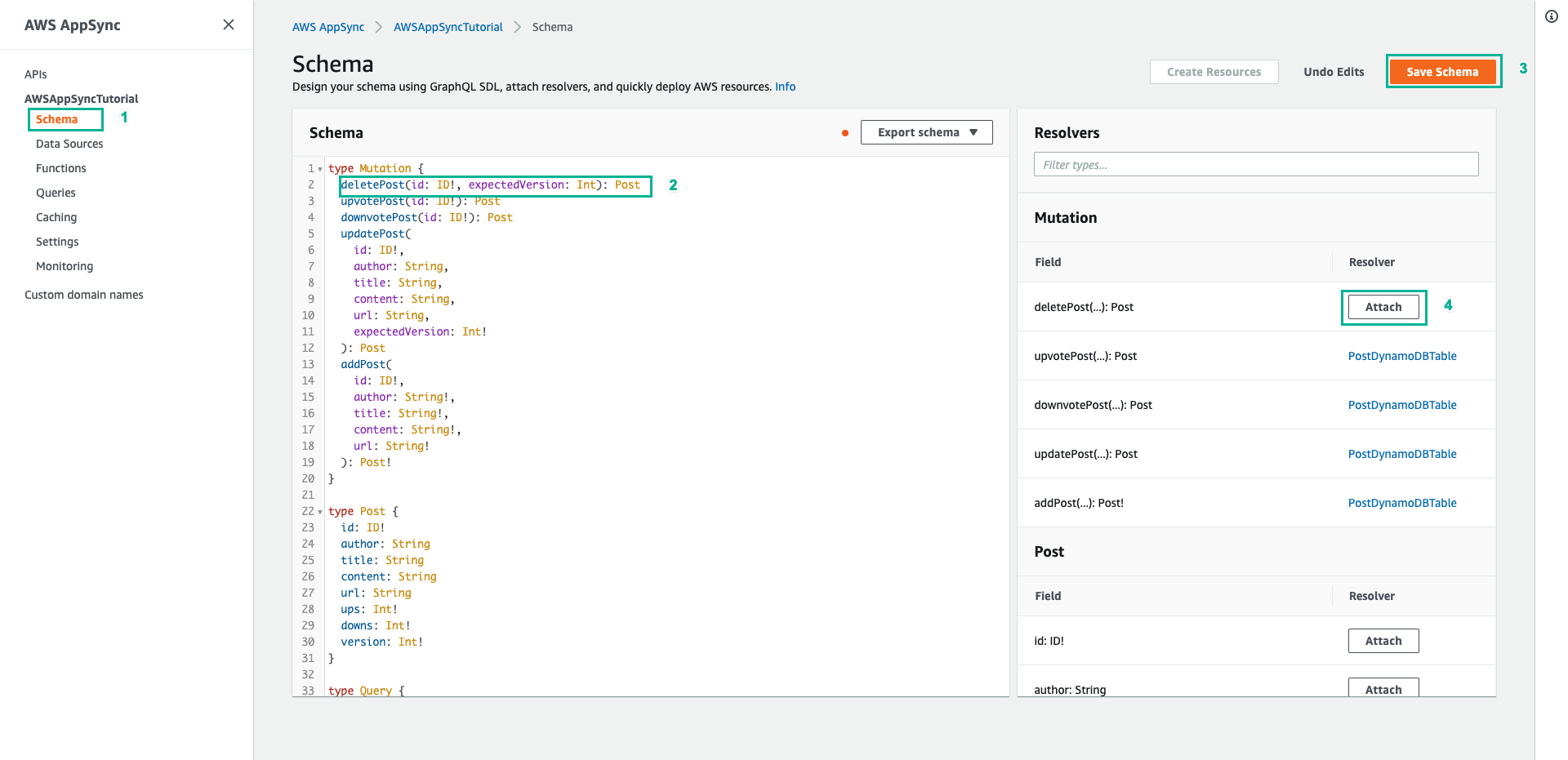
- Chọn PostDynamoDBTable cho mục Data source name
- Dán nội dung dưới đây vào mục Configure the request mapping template
{
"version" : "2017-02-28",
"operation" : "DeleteItem",
"key": {
"id": $util.dynamodb.toDynamoDBJson($context.arguments.id)
}
#if( $context.arguments.containsKey("expectedVersion") )
,"condition" : {
"expression" : "attribute_not_exists(id) OR version = :expectedVersion",
"expressionValues" : {
":expectedVersion" : $util.dynamodb.toDynamoDBJson($context.arguments.expectedVersion)
}
}
#end
}
- Dán nội dung dưới đây vào mục Configure the response mapping template
$utils.toJson($context.result)
- Sau đó ấn Save Resolver
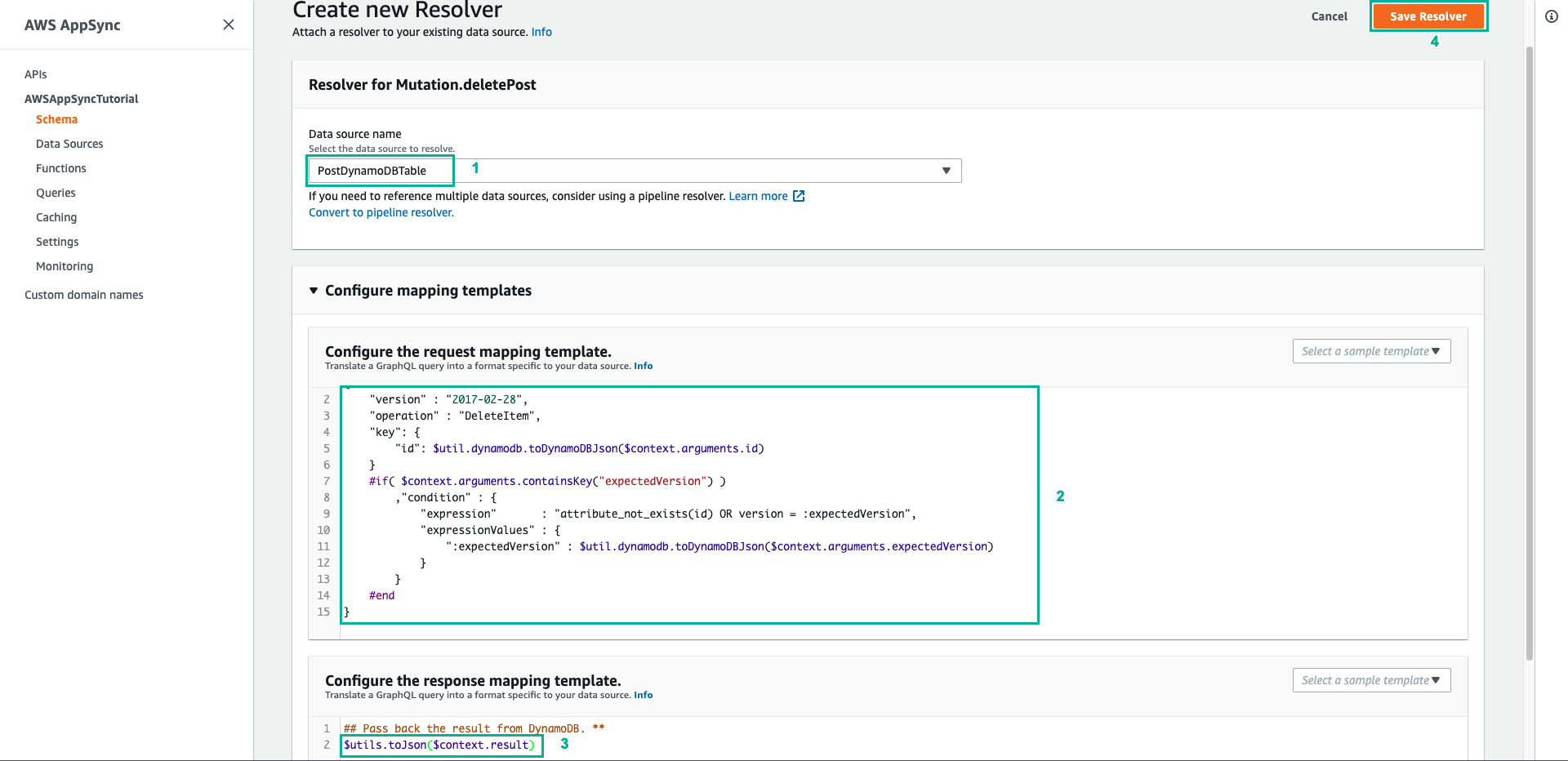
- Chọn tab Queries
- Dán đoạn script dưới đây vào phần Queries, sau đó ấn Execute query (nút màu cam)
mutation deletePost {
deletePost(id:123) {
id
author
title
content
url
ups
downs
version
}
}
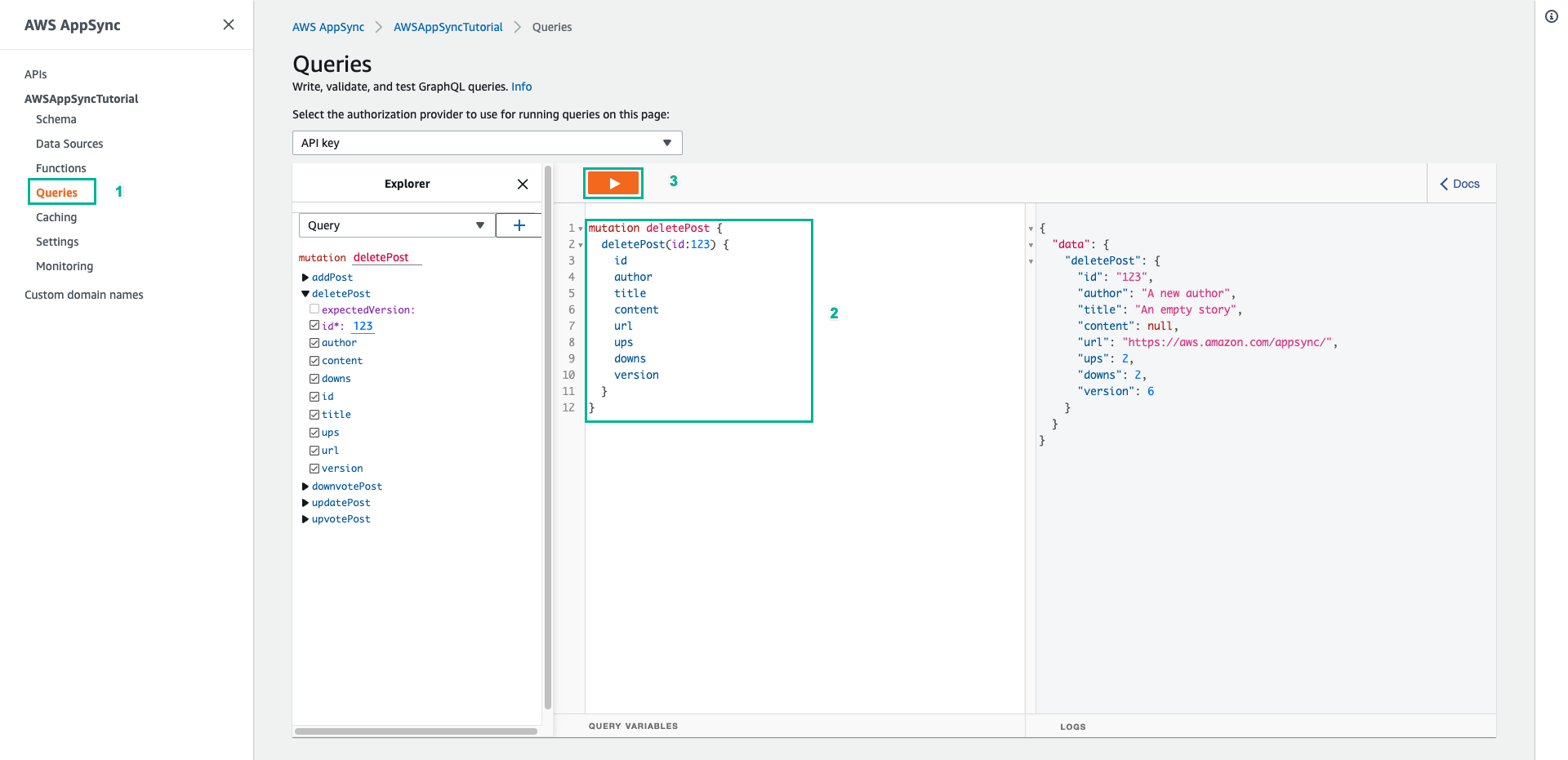
- Ấn Execute query (nút màu cam) lần nữa, kết quả trả về NULL vì bạn đã xoá ở bước trên rồi
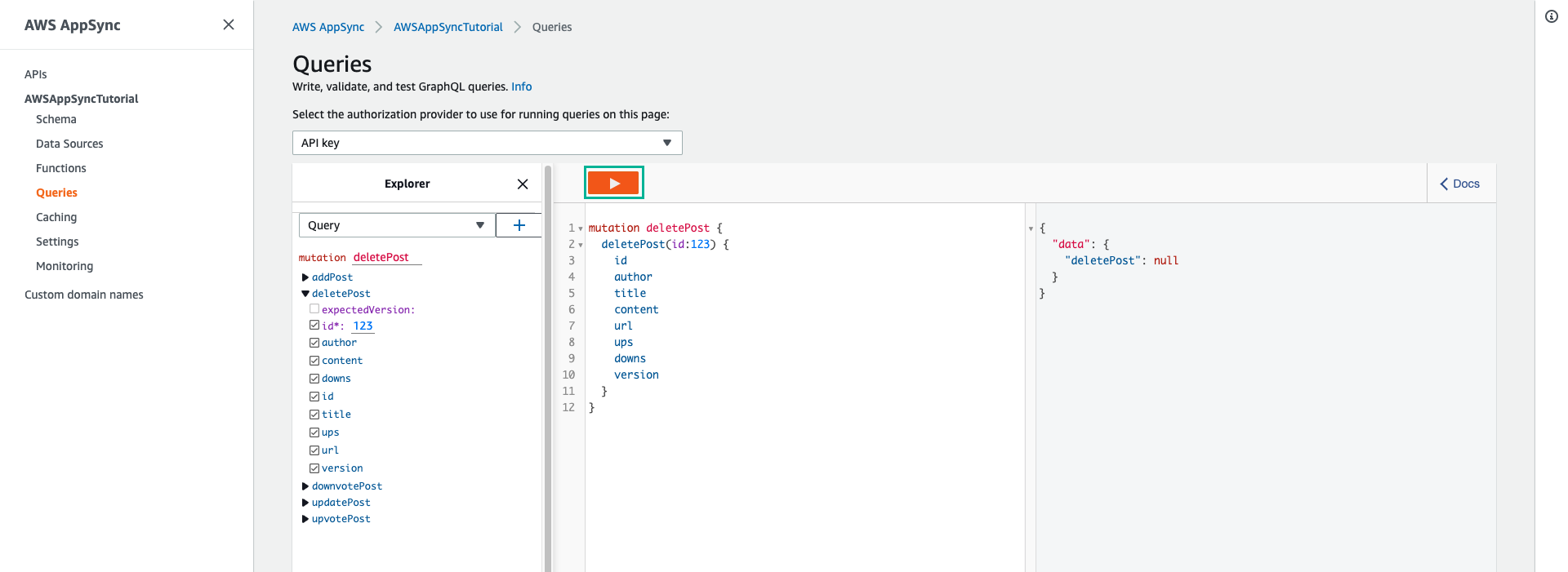
- Dán đoạn script dưới đây vào phần Queries, sau đó ấn Execute query (nút màu cam) để thêm một bài đăng mới
mutation addPost {
addPost(
id:123
author: "AUTHORNAME"
title: "Our second post!"
content: "A new post."
url: "https://aws.amazon.com/appsync/"
) {
id
author
title
content
url
ups
downs
version
}
}

- Dán đoạn script dưới đây vào phần Queries, sau đó ấn Execute query (nút màu cam) để xoá bài đăng có expectedVersion là 9999
mutation deletePost {
deletePost(
id:123
expectedVersion: 9999
) {
id
author
title
content
url
ups
downs
version
}
}
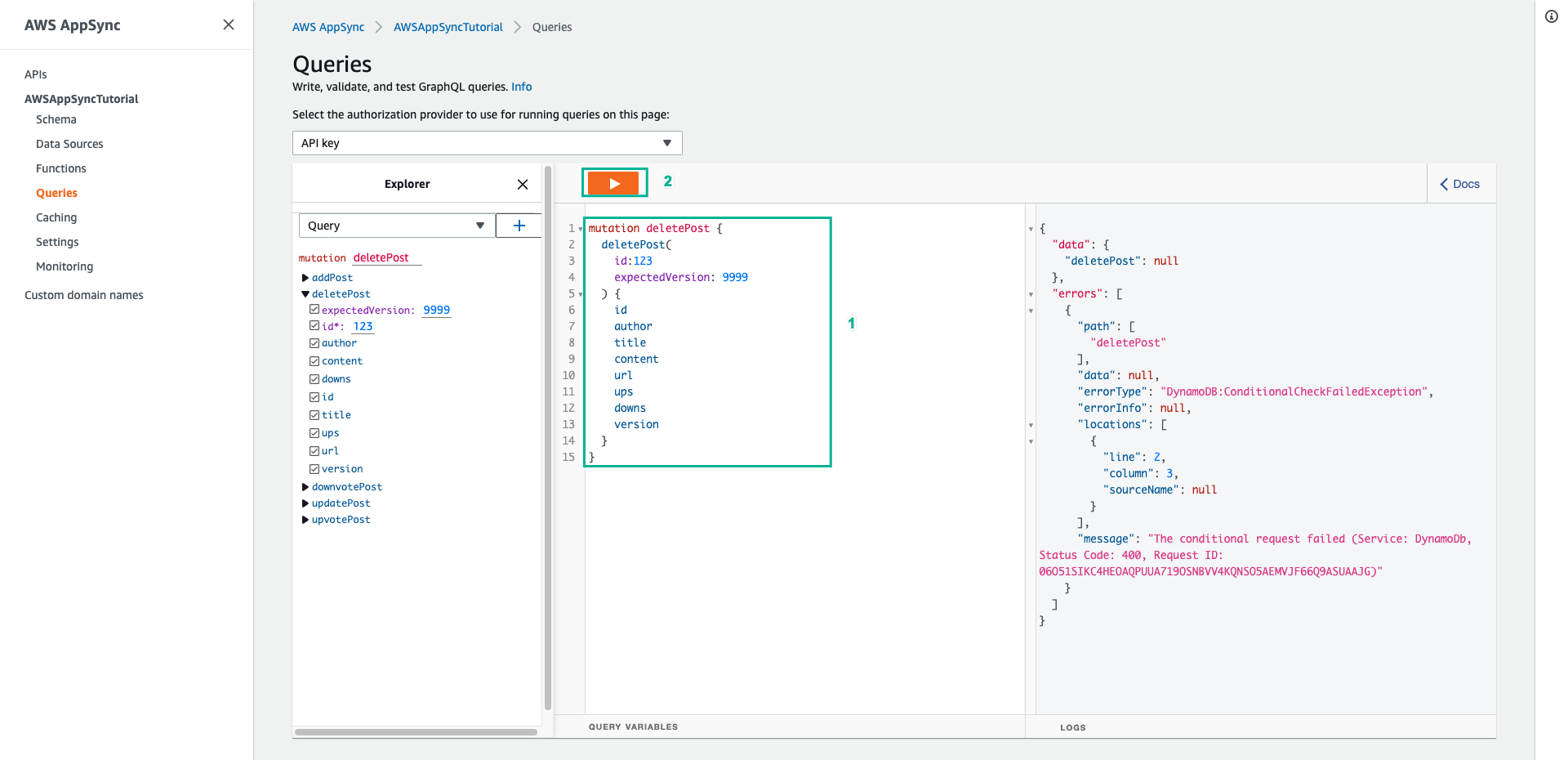
Yêu cầu không thành công vì biểu thức điều kiện đánh giá là sai: giá trị cho version của bài đăng trong DynamoDB không khớp với expectedVersion được chỉ định trong các đối số. Giá trị hiện tại của đối tượng được trả về trong trường dữ liệu trong phần lỗi của phản hồi GraphQL.
- Chỉnh lại giá trị của expectedVersion thành 1, sau đó ấn Execute query (nút màu cam)
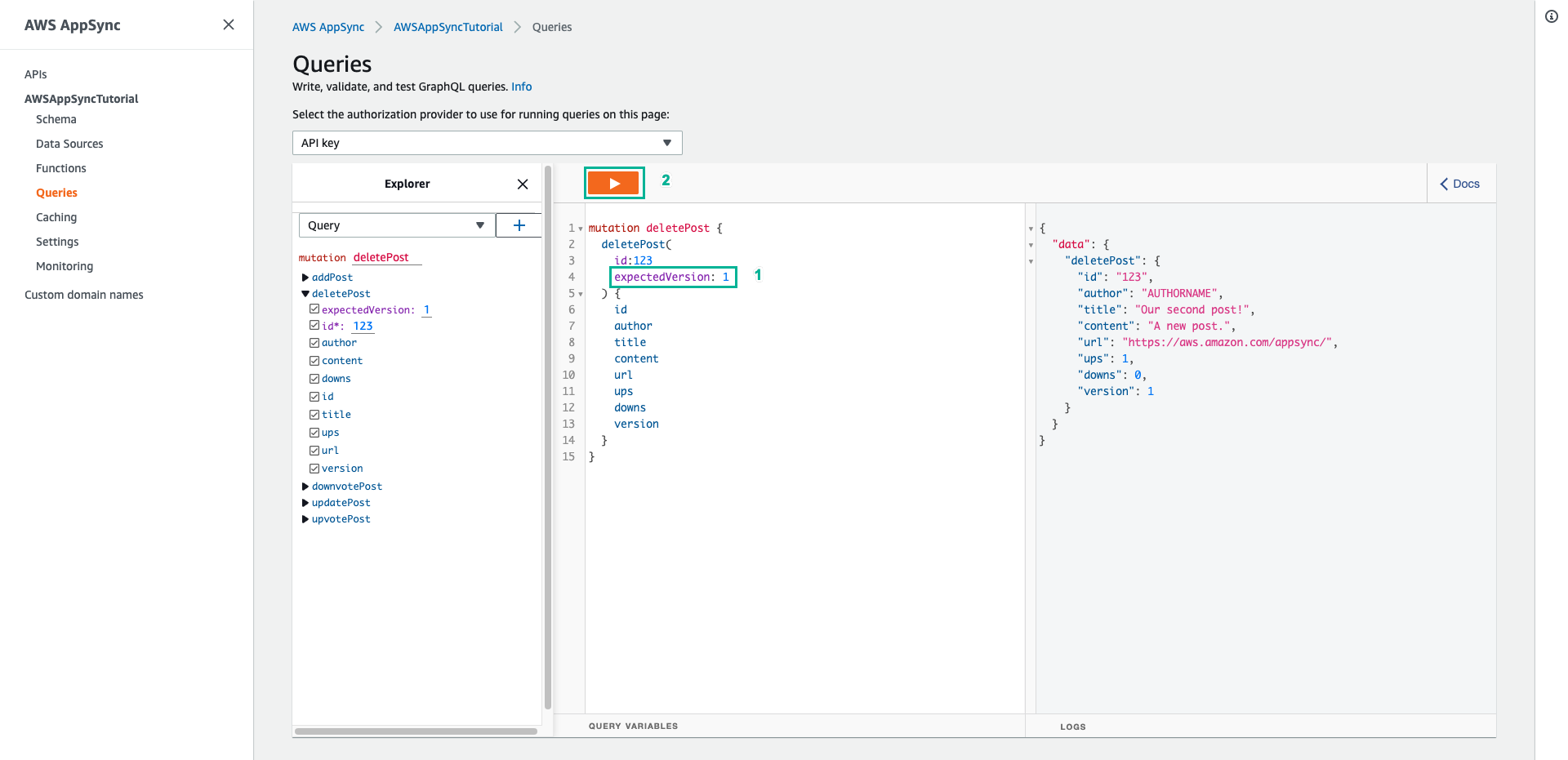
Yêu cầu đã thành công và bài đăng đã được xoá khỏi DynamoDB